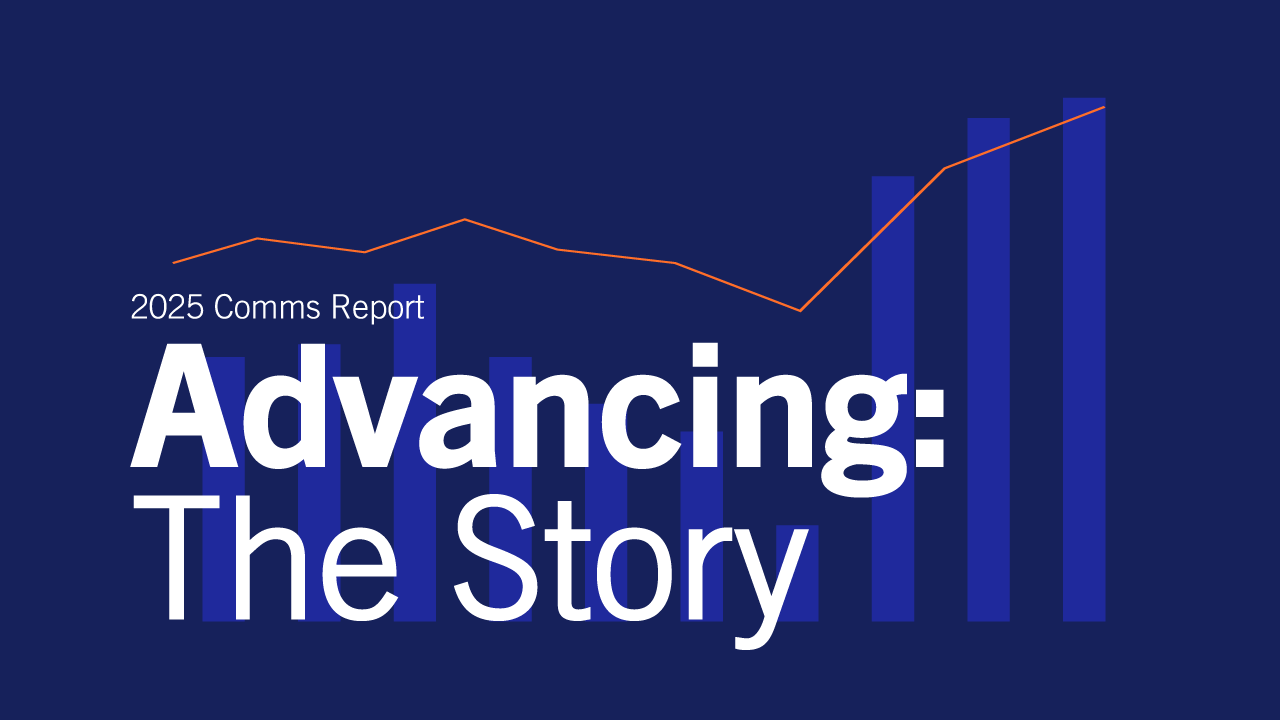Believe it or not, the end of the year is rapidly approaching. Soon it will be time to do that one thing we all dread: Evaluate the goals we set at the beginning of the year to see how close – or how far – we are to achieving those objectives.
If you’re on target to reach your goals, congratulations (you must be getting some excellent guidance!), and keep up the momentum.
If you find you’re struggling to keep up, the good news is, you’re far from alone. One thing we learned from this year’s Global Comms Report is that public relations and comms teams face a lot of challenges – and proving impact is right at the top.
While setting goals is essential to measuring success, shaping strategies, keeping team members accountable, and pushing us to perform at our highest level, there are often so many factors at play that can prevent you from meeting those goals. The best you can do is try to identify the factors that are within your control and adjust your PR strategy accordingly.
Below are five possible obstacles that are preventing you from meeting your PR goals – and strategies to help you overcome them.
Obstacle #1: Lack of support from the C-suite
Any company initiative that isn’t supported from the very top is going to have an uphill battle to fight, and PR is no exception. Getting buy-in from the executive team is critical for virtually every aspect of PR – from securing budget or getting the right software in place, to acting as credible spokespeople and brand ambassadors. (According to the 2024 State of the Media report, journalists are more likely to cover your story when they can get interviews with company executives or spokespeople.)
How to fix it:
If you want the ear of the C-suite, you need to speak their language. You need data. If you’ve been measuring the results of your PR efforts, you should have a fair amount of data to show PR’s value – and its potential impact – on the company’s core objectives, such as market share, or brand reputation. Look to metrics like earned media coverage, website traffic, lead generation, or increased share of voice to show how PR activities are contributing to measurable business outcomes. And whenever possible, link PR efforts to financial results, such as increased sales.
If you continue to face resistance, try proposing a smaller PR project that can deliver quick, measurable wins and underscore the value of your impact in a shorter time frame. Such an approach can secure you a bigger budget for next time.
Obstacle #2: Inconsistent messaging
This tends to happen when PR, marketing and other teams (such as corporate communications, customer success, or human resources) within an organization work separately from each other and in silos. If these teams aren’t communicating with one another, you could be sending out different – or even conflicting – messages that have the potential to confuse audiences and weaken the brand.
How to fix it:
Make a concerted effort to collaborate across departments to ensure everyone is working toward the same goal, playing to each other's strengths, and sending a consistent message across all channels, to all audiences. Hold regular, cross-departmental meetings to ensure everyone is staying accountable, share relevant news or updates, and gain alignment if you need to pivot or adjust strategies. Consider creating shared documents with key messages or FAQs so there is a “single source of truth” all teams can reference.
Obstacle #3: Changing circumstances and inability to adapt
In public relations, the ability to pivot quickly – amid unforeseen circumstances, evolving technology, emerging trends, changing audience behaviors, or any number of other factors – is critical to the job. You need to be ready to capitalize on timely news, trends, or events; otherwise, you might miss major opportunities to increase visibility for your brand. And even the most well-planned PR strategies can become obsolete or less effective if the market or public perception shifts – and you aren’t adjusting your strategy with it. Not to mention that in times of crisis or controversy, failure to respond to negative news in a timely manner could worsen a situation, resulting in damage to the brand’s reputation or a loss of trust with stakeholders.
How to fix it:
Build flexibility into your PR strategy from the start, designing your PR campaigns in such a way that they can be adjusted quickly, if needed. Revisit your strategy throughout the year to assess if and where you need to adjust. It’s also critical to stay ahead of evolving market trends and news that could have an impact on your industry. Set up Google Alerts or subscribe to an industry news aggregator, and take advantage of media monitoring and social listening tools, which enable you to stay on top of the conversations around your brand, industry, and competitors as they’re happening. The more informed you are, the faster you can make decisions about when and how to pivot your communications strategy.
Obstacle #4: Ineffective measurement and analysis
If you’re struggling to meet your goals, it might be because you’re struggling to measure them properly. When it comes to PR measurement, there are a lot of challenges getting in the way of a “single source of truth” that PR teams can trust and use as their baseline. One common mistake is focusing solely on so-called vanity metrics like AVE, which lack needed context and are often unreliable.
Consistency is also key with measurement – if you aren’t tracking the right metrics on a consistent basis, you can’t trust the numbers behind them or glean meaningful insight.
Finally, consider the tools you’re using to measure – having the right tools in place is just as critical to ensure you’re getting a robust amount of intel to get a complete picture of your performance.
How to fix it:
Consider investing in more sophisticated media monitoring and social listening tools that can track media coverage, engagement, sentiment analysis, and other key performance indicators across all the channels your PR efforts take place, like social media, email, and traditional media. (Bonus – these are the same tools that can help you prove PR’s impact to the C-suite.) Review performance regularly – not just at the end of a campaign or fiscal year – to understand the effectiveness of ongoing efforts, track performance over time, and find opportunities to maximize your efforts. Consistent measurement will also help you identify any gaps in your current measurement strategy and understand where you can streamline it moving forward.
Obstacle #5: It’s not you, it’s them (your goals, that is)
Finally, if you’re not meeting your goals, you might need to look at your goals themselves. Are you aiming too high? Sure, it would be amazing to see your brand mentioned in The New York Times or as part of the top story on Good Morning America, but it might not be realistic.
How to fix it:
Not to say that you shouldn’t reach for the stars like Casey Kasem would want you to, but don’t discount the value of coverage in local media outlets or lesser known, but more targeted trade and niche publications. A few years ago, Adobe conducted an audit of their media coverage, during which they discovered that 65% of the 3,000 outlets they pitched to only generated one story about the brand; meanwhile a group of about 500 outlets generated 75% of all quality coverage. The software giant now focuses on this smaller group of outlets, which saves time and money while producing better end results.
How to Set Effective PR Campaign Goals
When it comes to setting effective goals for your public relations and marketing campaigns, we recommend creating SMART (specific, measurable, achievable, relevant, and time-bound). The SMART framework is designed to help teams focus, create structure, and prioritize what matters most. It also makes progress easier to track and evaluate, which can be particularly helpful for PR teams that struggle with proving impact.
Here’s what the SMART goal framework looks like in practice:
- Specific: Define what you want to accomplish as clearly and detailed as possible. In addition to asking yourself “What do you want to accomplish?” Consider who else will be involved and where you might see the results. For example, instead of a goal of “Improve media relations,” get even more specific with, “Increase brand mentions in top-tier industry publications"
- Measurable: Establish concrete criteria for measuring progress. Include specific numbers when possible. For example, instead of “Enhance brand reputation,” get more specific with, "Achieve a 25% increase in positive brand sentiment."
- Achievable: Set goals that are ambitious yet realistic given your resources, budget, and time frame. Use past performance and industry benchmarks to decide what is realistic. For example, if you typically secure two executive interviews per year, aiming to increase that to five is more realistic than shooting for, say, 20; yet it is still ambitious at a 150% increase.
- Relevant: Make sure your goal aligns with the broader PR team strategies and overall business objectives. Think about how achieving your goal could impact the organization. For example, if your company is launching a new product, a relevant goal might be, "Secure 50 media mentions of the new product within 30 days of launch."
- Time-bound: Set a deadline for achieving your goal – whether it’s 30 days out of the official campaign launch, or by the end of the year. Committing to a time frame will create accountability and enable you to prioritize the efforts that will support your goals. For longer term goals, consider building in dates for milestones and various outputs to break it down and make it more manageable.
If, after examining and revising your strategy, you’re still not meeting your PR goals, consider partnering with an industry expert who will take the time to understand your organization, objectives, and challenges, and help you find the right solutions.
Find out how CisionOne provides the intel you need to inform, track, and achieve SMART PR campaign goals – from understanding your baseline for media mentions to where there are opportunities to get more coverage, and everything in between.
Find out more about CisionOne and make time to speak with one of our experts.
Most Recent Posts
Cision Resources
-
E-books and Guides
Comprehensive how-to guides on strategy and tactics
-
Case Studies
What are other brands doing – and how can we learn from them?
About Mary Lorenz
Mary Lorenz is Director of Content and Creative at Cision. She oversees the editorial strategy at Cision and writes about best practices and thought leadership for marketing, communications and public relations professionals. She has a background in marketing, public relations and journalism and over 15 years of experience in copywriting and content strategy across a variety of platforms, industries and audiences.
Learn More. Do More. demo new
PR Tips, Case Studies, and Product Updates

[On-Demand Webinar] The Next Generation of Media Intelligence: From Gorkana to CisionOne
Explore CisionOne, a revolutionary media intelligence platform, and the evolution of Gorkana. Learn key features and strategies from Luke Williams, CisionOne Product Marketing Manager. Elevate your media outreach to new heights!


